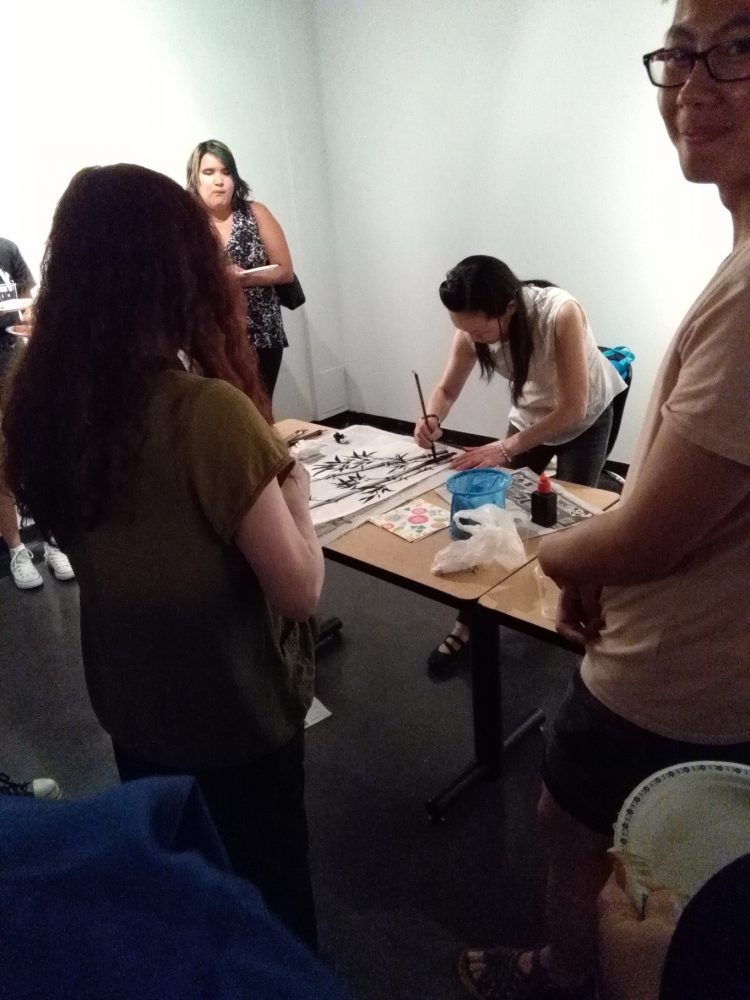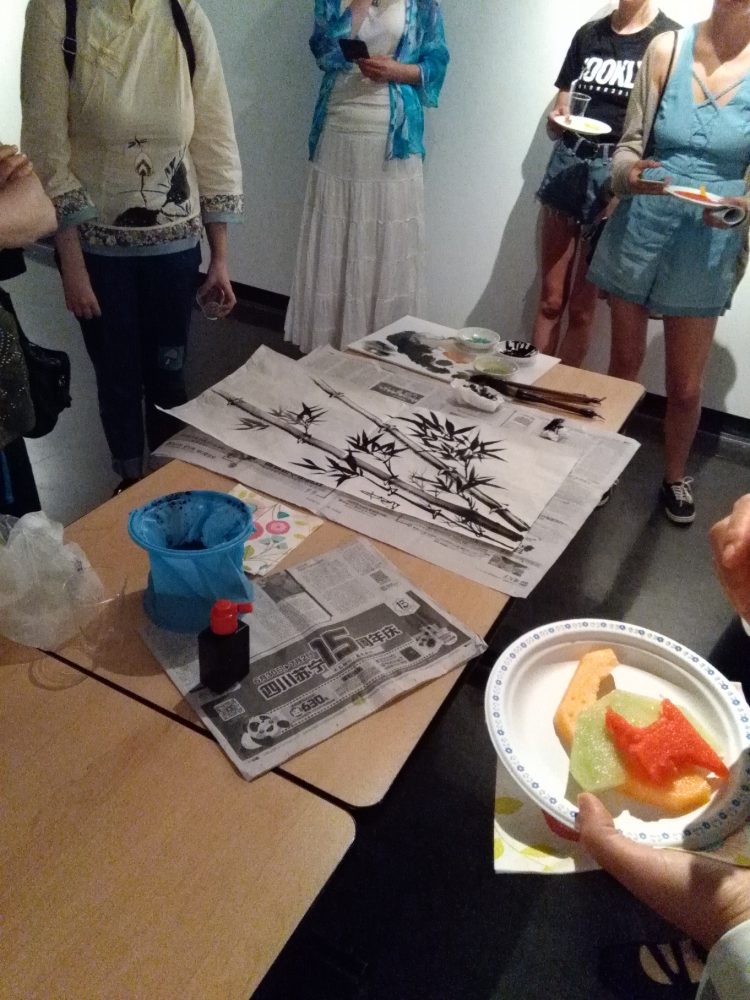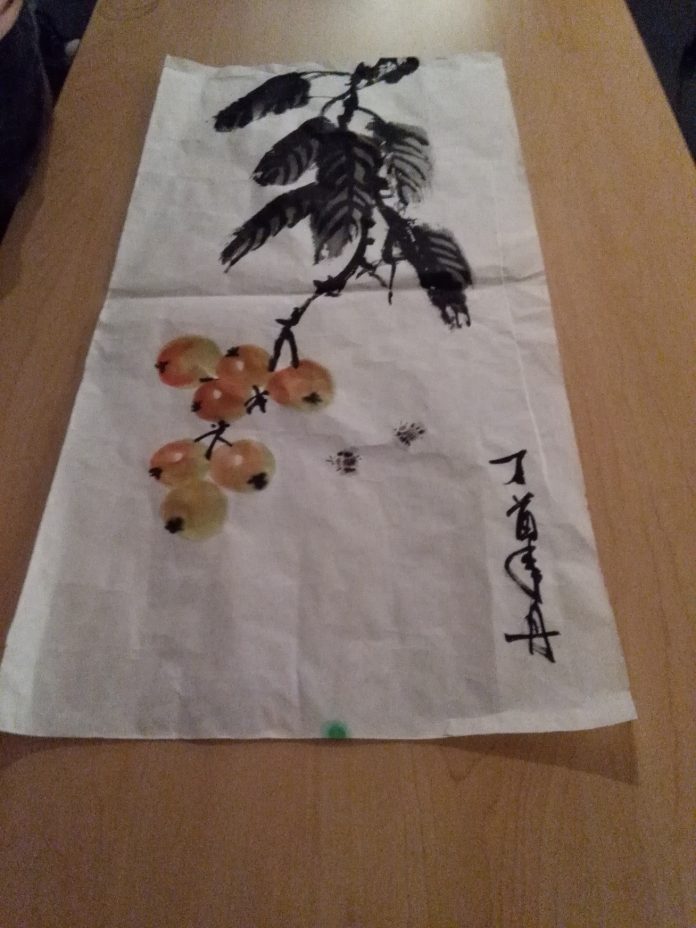Visiting Professor Wu Dan from Sichuan Normal University in Chengdu, China held a lecture on traditional Chinese painting on Wednesday, June 5. Speaking with the help of an interpreter, the presentation was bilingual in both Mandarin and English. She explained some of the differences in tools and techniques used in traditional Chinese painting, as well as the philosophy and influences behind them. The lecture covered examples of both historical and contemporary Chinese painting, including some of Wu’s own pieces, and concluded with a live demonstration by Professor Wu of the tools and techniques described.
The most important tool is Chinese black ink, which is used to some extent in nearly all works. Ink and coloured paint is applied with brushes of varying thickness and firmness, which are used for painting particular objects using certain strokes. The medium is most commonly Shuen rice paper, but other materials like silk have been used in both past and present.
The main objective of Chinese painting is to represent the object, focusing on its shape, unlike Western painting, which places more emphasis on the interplay of colour and light. Paintings often have partial or no background. Text is sometimes incorporated in the picture, and the calligraphy is considered to be a part of the art.

Chinese painting has two main approaches or styles: freestyle and meticulous style. Freestyle is applied directly to the medium, usually Shuen rice paper, in rapid flowing motions, without the use of an outline. The goal of this style is to capture the “spirit” of the objects represented, and therefore the artist has greater leeway in using their imagination. Freestyle paintings are often partly or entirely in monochrome, with brushstrokes and strategic areas of colour used to portray nuance, and to emphasize certain areas. The meticulous style is more detail-oriented, utilizing outlines both as a preliminary template, and as a visible outline in the finished work.
Some common genres of painting were shown, including landscape, figure, and bird & flower, each with varying similarities to their Western equivalents.
Wu’s first trip to Canada was in 2012. She shared how she had been impressed by the artwork on display in Vancouver, and explained that she views all art produced by society as being interconnected, and as reflecting the thoughts and feelings of people in that society.
Wu also shared some information about how art is taught in China, which begins with copying famous artworks to learn the techniques used by their artists. This is in contrast to the Western method where, with the exception of life studies, individual expression is encouraged as early and fully as possible.

The lecture concluded with a live demonstration by Professor Wu of her craft. She made two freestyle paintings, showing some of the tools and methods described earlier.
Professor Wu will be making intermittent visits to UFV over the months of July and August as part of a teaching exchange program with Sichuan Normal University. Her Canadian counterpart, visual arts department head and associate professor Shelley Stefan, will be sharing her own experiences upon her return on September 3, from 4:00 to 6:00 p.m. in B101 lecture theatre at Abbotsford campus.


